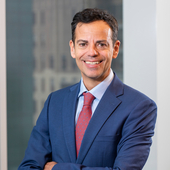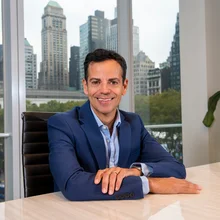
Currency derivatives house of the year: Bank of America
Risk Awards 2024: US bank’s emerging market options investments were perfectly timed for a surge in carry trade activity

In 2023, the volume was turned way down on the market for foreign exchange volatility. Huge spikes in interest rate vol did little to offset the muting effect on G10 currencies. And as hedge funds turned to emerging market (EM) carry trades, the result has been a resurgence in exotic FX options trading.
At Bank of America, the FX derivatives business has spent two years investing heavily across developed and emerging markets trading to prepare for this eventuality, while simultaneously bolstering its corporate and institutional franchises to help offset these flows and price more keenly.
Its plans have paid off – BofA is now one of the go-to choices for clients to trade emerging markets-denominated FX options. And nowhere have carry trades been more popular than in Latin America, where the Brazilian real and Mexican peso are delivering significant returns.
“Bank of America is now one of our biggest partners and one of the most flexible to show resilient pricing consistently, especially within EM markets like Mexico,” says one large European corporate client.
“Two years ago, we were not trading as much with [BofA], especially on the emerging markets side. But we have worked together and found a framework that suits our needs.”

We are going to have a record year in deal-contingent this year
Carlos Fernandez-Aller
This is a mere hint at the bank’s growth in currency derivatives. Its overall FX options volumes have grown by 52% since 2020, while revenues from the business have increased 78% over the same period. LatAm now makes up a larger proportion of its trading, accounting for nearly a fifth of all FX options volumes and increasing almost four-fold since 2020.
At the same time, it has reported a decrease of 9% in brokerage costs, meaning the trading desk has been able to offset more flow with clients, rather than hedging in the interdealer market.
“We are not using the Street as much as our volumes have increased,” says Carlos Fernandez-Aller, head of global FX and emerging markets macro at BofA. “Because now we have found the other side of our trades through clients.”
The bank has notably spent more time courting corporates – to give its franchise more opportunities for risk recycling.
It has, for example, almost doubled its share of options portfolios over the past 10 months with one large US corporate alone. In 2021, it had around 15% of outstanding notional with this client and is now on course to hold an estimated 45% by the end of the year. The bank reported the largest gains were in euro/USD exposures, where it tripled the size of its vanilla portfolio.
Another example saw it trade a series of six-month to one-year USD/JPY risk reversals with a new Japanese corporate client that was taking its first serious steps into FX hedging.
And building up the corporate side has meant it could take on larger trades from other clients.
One standout example saw the bank work with an EM sovereign on a $1 billion, long-dated options hedging programme. BofA found a corporate that was interested in the other side at a similar tenor almost immediately and hedged the rest of the exposure via hedge fund clients.
Amping up
According to Fernandez-Aller, when setting out the overall aim for the business, it wanted to achieve a minimum market share of at least 20% with each client segment across all currencies and products. To meet these ambitious goals, it spent the past two years considerably enhancing both its technological capabilities and its team.
This started at the top in 2020, hiring Fernandez-Aller from Goldman Sachs. Then, last year, it recruited two senior FX options traders from Deutsche Bank – Thomas Cobbold and Tobias Jungmann – to head global emerging markets FX options trading and Americas FX options trading respectively.
In addition, it has focused on improving its penetration with real-money clients, hiring a new sales force dedicated to growing relationships with asset managers trading FX options.
One large US-based asset manager client acknowledges these efforts: “The change in personnel over the last few years has certainly improved their options business. They can recognise what we are looking for, then optimise a solution for us in what would be the best reflection of that view.”
Besides bringing in major new hires to run things, the bank restructured its trading desks, merging its G10 and emerging markets desks so that it can operate beyond a siloed regional basis.

We traded with a big US corporate client on some options trade, and we were able to hedge 95% of the risks within our franchise
Varut Dechpokket
“Our EM traders in Asia are capable of not just showing prices on Asian currencies, but are also experienced and capable of managing LatAm or central and eastern Europe, Middle East and Africa risk as well,” says Varut Dechpokket, global head of FX options trading at the bank. “For example, we’ve been able to show MXN liquidity in Asian time zones and vice versa. By looking at risk holistically, it helps us to do more with clients.”
On the technology side, it sought to improve its pricing tools, both for internal traders and for clients. This includes the development of a new grid pricing system, enabling it to compute complex structures like target redemption forwards (Tarfs) – dramatically reducing the time to calculate the price of a trade from up to 10 minutes to 30 seconds.
It also integrated its risk systems across developed and emerging markets, to have one global risk infrastructure with one risk team to oversee it. This has enabled it to better identify and aggregate currency correlations to offset directional flows through internalisation, and trade more complex exotics like dual digitals – an area where it previously had limited capabilities.
“For example, we traded with a big US corporate client on some options trade, and we were able to hedge 95% of the risks within our franchise, such as with other US and Emea corporates, as well as private wealth in Asia and regional banks in Asia,” says Dechpokket. “All of these allow us to not touch the market at all.”
These changes have led to the bank significantly increasing its risk tolerance to a level needed to grow the business and to take on these large trades with corporates.
“In the past it usually took a month to clean up that risk, because you really didn’t have the other side,” says Fernandez-Aller. “Now, as you build the other side, instead of a month it takes you a week. And then that allows you to put on significantly bigger levels of inventory, because the speed to offload the risk is much faster than before.”
This is why it was able to do such hefty transactions, as with the large EM sovereign trade. It was done in tranches, each requiring the bank to hold risk for two to three weeks. In the past, this might have given pause to the BofA risk department – but the business has shown it is able to move these risks quickly and has now been given more leeway for these larger-sized trades.
Leading the charge
The bank has also seen a greater global reach among its clientele. Asian clients have sought to trade Latin American currencies more frequently, for example, while Brazilian hedge funds have been interested in Asian pairs.
This proved effective for facilitating an influx of USD/MXN and USD/BRL flows, which have become the bank’s fourth and fifth most-traded currency pairs this year. “We are very much leading the charge and doing a lot of this correlation business with institutional clients in significant size that previously we were not comfortable with,” says Dechpokket.
USD/MXN trading lower has been one of the dominant themes in the FX market this year. Large interest rate differentials to the US market have made it the most popular choice for carry traders, outperforming most global currencies with little retracement.

Dechpokket says hedge funds have used exotics like dual and triple digitals to take a view on various carry trades. For example, a structure would have USD/CNH at the topside barrier and USD/MXN on the downside. This assumes the dollar will continue to appreciate against the renminbi but depreciate against the peso. BofA has also been able to add various legs to this trade, such as USD/BRL lower and USD/Taiwan dollar higher, generating large profits for clients.
The bank has consequently increased its exposures in mid-curve dual digitals that utilise forward exposures and correlation savings by 10 times.
Pairing these currencies together has been a new phenomenon, but the bank has also been able to trade CNH/MXN as a single-format structure as well. While this cross is, historically, not that liquid, Dechpokket says it does not need to directly cover the cross.
“We are very active in the single-factor market. We do a huge amount of USD/MXN and a huge amount of USD/CNH, and by being active in these markets, those flows [themselves] hedge the correlation risk in CNH/MXN,” adds Dechpokket.
He believes that without this kind of diversification into emerging markets, the business would have suffered in the face of lower G10 volatility.
And the diversification of client types has helped the desk to be more precise when skewing and identifying profitability opportunities. How the bank allocates liquidity to certain clients is largely based on their trading behaviours – whether they are receptive to restructuring or rolling hedges, and how clean their flow is.
“In a lot of the trades we do, particularly in complex exotics, you cannot perfectly offset those risks externally,” says Dechpokket. “Therefore, you do need clients to be partnering with you in broadening those exposures because, ultimately, you don't want to get to a situation where it's a coin toss. And in those scenarios, typically, you can end up where both sides go away unhappy.”
Contingency move
Beyond its growing client base among corporates and real-money firms, the bank has also jumped into deal-contingent (DC) transactions headfirst.

“We are going to have a record year in deal-contingent this year,” says Fernandez-Aller. “Three years ago, we were not [in] the business at all. The bank was not open to execute deal-contingents.”
The move has been spurred by the changed nature with which the bank views risk. Rather than doing three or four deal-contingent trades a year with large potential downside – but good P&L – the bank decided to focus on multiple smaller trades. This enhanced its ability to avoid the headline-grabbing losses that had been seen with some other banks, while conducting as many as 12 DC trades.
BofA’s approach to the DC business is unique, says Fernandez-Aller, because it is willing to give up some of the upside for those trades through hedging in order to avoid the big losses.
If a client acquisition does not happen and the bank has to pay out, the desk only stands to lose up to 10% of the trade because it has been hedged with other clients and at-the-money FX options.
“It allows us to significantly reduce the overall risk of the portfolio,” says Fernandez-Aller. “So, with this strategy, we managed to get the internal approval to start the business and it has been growing a lot.”
Only users who have a paid subscription or are part of a corporate subscription are able to print or copy content.
To access these options, along with all other subscription benefits, please contact info@risk.net or view our subscription options here: http://subscriptions.risk.net/subscribe
You are currently unable to print this content. Please contact info@risk.net to find out more.
You are currently unable to copy this content. Please contact info@risk.net to find out more.
Copyright Infopro Digital Limited. All rights reserved.
As outlined in our terms and conditions, https://www.infopro-digital.com/terms-and-conditions/subscriptions/ (point 2.4), printing is limited to a single copy.
If you would like to purchase additional rights please email info@risk.net
Copyright Infopro Digital Limited. All rights reserved.
You may share this content using our article tools. As outlined in our terms and conditions, https://www.infopro-digital.com/terms-and-conditions/subscriptions/ (clause 2.4), an Authorised User may only make one copy of the materials for their own personal use. You must also comply with the restrictions in clause 2.5.
If you would like to purchase additional rights please email info@risk.net
More on Awards
Clearing house of the year: LCH
Risk Awards 2025: LCH outshines rivals in its commitment to innovation and co-operation with clearing members
Best use of machine learning/AI: CompatibL
CompatibL’s groundbreaking use of LLMs for automated trade entry earned the Best use of machine learning/AI award at the 2025 Risk Markets Technology Awards, redefining speed and reliability in what-if analytics
Markets Technology Awards 2025 winners’ review
Vendors jockeying for position in this year’s MTAs, as banks and regulators take aim at counterparty blind spots
Equity derivatives house of the year: Bank of America
Risk Awards 2025: Bank gains plaudits – and profits – with enhanced product range, including new variants of short-vol structures and equity dispersion
Law firm of the year: Linklaters
Risk Awards 2025: Law firm’s work helped buttress markets for credit derivatives, clearing and digital assets
Derivatives house of the year: UBS
Risk Awards 2025: Mega-merger expected to add $1 billion to markets revenues, via 30 integration projects
Interest rate derivatives house of the year: JP Morgan
Risk Awards 2025: Steepener hedges and Spire novations helped clients navigate shifting rates regime
Currency derivatives house of the year: UBS
Risk Awards 2025: Access to wealth management client base helped Swiss bank to recycle volatility and provide accurate pricing for a range of FX structures







